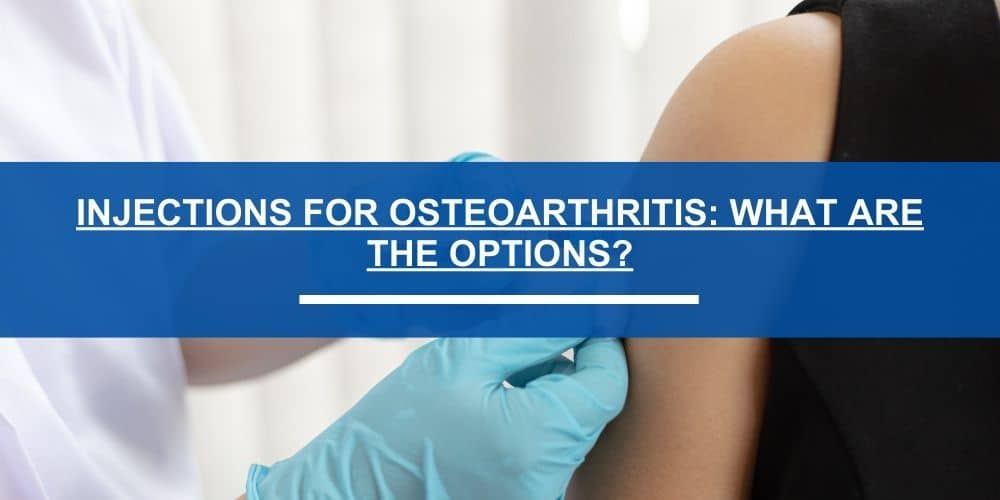The Options
Injections can be a way to manage or treat arthritis and its flares. Here you will find a summary of the most popular injections used to treat arthritis.
Corticosteroid Injection
What is a Corticosteroid?
Cortisone is a type of medication called a corticosteroid. These drugs are used to treat inflammation (swelling) caused by injury and illness. Steroid injections are also called cortisone shots. Commonly used cortisone variants include Kenalog (tramcinolone), Depo-Medrol (methylprednisolone), and Celestone (Betamethasone).
People most commonly receive cortisone shots in joints including the hip, knee, shoulder, spine, hands and feet. The cortisone reduces inflammation (swelling) in and around the joint.
The main purpose of the steroid injection is to decrease pain and increase movement and use of the affected area. Steroid injections are usually well tolerated and much less likely than steroid tablets to cause serious side effects.
Side Effects
Side-effects are very unlikely but occasionally people notice a flare-up of pain in the injected area within the first 48 hours after the injection. This usually settles on its own within a couple of days but taking simple painkillers like Tylenol may help.
Other steroid-related side-effects are rare but may include:
Infection (If your joint becomes more painful and hot you should see your doctor immediately, especially if you feel unwell).
Allergic reactions.
Local bleeding.
Flushing of the skin.
Rupture of a tendon (if the injection is given directly into the tendon).
Excessively frequent, repeated injections into the same area can cause the bone, ligaments and tendons to weaken.
Thinning or changes in the color of the skin at the injection site, particularly with repeated injections.
A rise in blood sugar levels for a few days after the injection may occur if you have diabetes.
Outcomes
Results of a steroid injection typically depend on the reason for the treatment. Steroid injections commonly cause a temporary flare in pain and inflammation for up to 48 hours after the injection. After that, your pain and inflammation of the affected joint should decrease and can last up to several weeks/months. A local anesthetic medication will also be injected along with the steroid to reduce the discomfort of the injection.
Hyaluronic Acid Injection
What is Hyaluronic Acid?
Hyaluronic acid is a naturally occurring substance found in the synovial fluid surrounding joints. It acts as a lubricant to enable bones to move smoothly over each other and as a shock absorber for joint loads. People with osteoarthritis have a lower-than-normal concentration of hyaluronic acid in their joints. The theory is that adding hyaluronic acid to the arthritic joint will facilitate movement and reduce pain.
Depending on the product used, you will receive one to five shots over several weeks.
Side Effects
You may notice a local reaction, such as pain, warmth, and slight swelling immediately after the shot. These symptoms generally do not last long. You may want to apply an ice pack to help ease them.
Rarely, patients may develop a local allergy-like reaction. In these cases, the joint may become full of fluid, red, warm, and painful. If this occurs, contact our office immediately. Infection and bleeding are also very rare complications of this procedure.
Outcomes
The most recent research has not found viscosupplementation to be effective at significantly reducing pain or improving function. Although some patients report pain relief with the procedure, some people are not helped by the injections.
For those who report pain relief with the procedure, it may take several weeks to notice an improvement. How long the effects last varies. Some patients report pain relieving effects for several months following the injections.
If the injections are effective they may be repeated after a period of time, usually 6 months.
Although some patients report relief of arthritis symptoms with viscosupplementation, the procedure has never been shown to reverse the arthritic process or re-grow cartilage.
The effectiveness of viscosupplementation in treating arthritis is not clear. It has been proposed that viscosupplementation is most effective if the arthritis is in its early stages (mild to moderate), but more research is needed to support this. Research in viscosupplementation and its long-term effects continues.
Platelet-Rich Plasma (PRP) Injection
What is Platelet-Rich Plasma?
Although blood is mainly a liquid (called plasma), it also contains small solid components (red cells, white cells, and platelets.) The platelets are best known for their importance in clotting blood. However, platelets also contain hundreds of proteins called growth factors which are very important in the healing of injuries.
PRP is plasma with many more platelets than what is typically found in blood. The concentration of platelets — and, thereby, the concentration of growth factors — can be 5 to 10 times greater (or richer) than usual. To develop a PRP preparation, blood must first be drawn from the patient. The platelets are separated from other blood cells and their concentration is increased during a process called centrifugation. Then the increased concentration of platelets is combined with the remaining blood. The platelet-rich plasma is then injected into the joint.
Side Effects
As injecting PRP involves using a person’s own platelets, adverse reactions to injections are usually minimal. It is possible that you may experience irritation, pain, or bleeding related to the injection site. Most people can resume their normal activities almost immediately after having a PRP injection. The average time from blood-drawing to the injection itself is about 30 minutes and will take place in the clinic.
Outcomes
Treatment with PRP could hold promise; however, current research studies to back up the claims in the media are lacking. Although PRP does appear to be effective in the treatment of chronic tendon injuries about the elbow, the medical community needs more scientific evidence before it can determine whether PRP therapy is truly effective in other conditions.
Even though the success of PRP therapy is still questionable, the risks associated with it are minimal: There may be increased pain at the injection site, but the incidence of other problems — infection, tissue damage, nerve injuries — appears to be no different from that associated with cortisone injections.
Bone Marrow Aspirate Concentrate (BMAC) Injection
What is Bone Marrow Aspirate Concentrate (BMAC)?
Also known as mesenchymal stem cells (MSCs), these cells are active healing agents in the body. They have the ability to decrease inflammation and restore a healthier environment within a painful joint. They also recruit healing cells to a site of injury or pain and may form other cell types, including cartilage and bone.
Where do stem cells come from and how does a stem cell injection (BMAC) work?
Adult stem cells can be found in many places, including bone marrow, fat, and placental and umbilical cord tissue. Currently, the most accepted area to collect and concentrate MSCs used for orthopedic applications is bone marrow from the iliac crest (“hip bone”). Bone marrow is removed from the hip bone using a simple procedure, and the bone marrow aspirate is then concentrated in a centrifuge. This is called bone marrow aspirate concentrate (BMAC). Once concentrated, the final product is very similar to PRP but with the addition of stem cells. As opposed to a PRP injection, a BMAC injection will take place in an operating room.
How long does the stem cell injection procedure take?
On the same day your bone marrow is collected and concentrated, the product is then injected into the area of the body being treated under image guidance (ultrasound or X-ray). The total procedure time usually takes 45 to 60 minutes. The most common orthopedic condition treated with stem cells is osteoarthritis and painful joints.
Bone marrow concentrate (BMC) uses stem cells that are harvested from your own bone marrow to help the body heal itself. These cells, when injected directly into an injury site, prompt a rapid and efficient restoration of the tissue, returning it to a more healthy state by stimulating the body’s natural healing response. It is a promising, non-surgical treatment for various orthopedic injuries, including mild to moderate osteoarthritis, disc degeneration and soft tissue injuries.
Outcomes
Research and clinical data show regenerative medicine injections using a patient’s own biologic material are extremely safe. There is minimal risk for any adverse reaction or complication. Because the cells are harvested from your own body, there is no concern for rejection or disease transmission.





